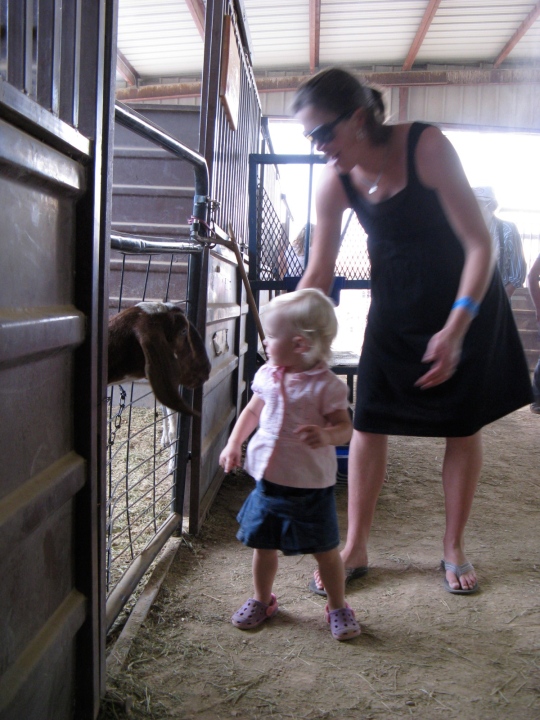Epidemiologists (aka disease-hunters) use a nifty tool called surveillance to track diseases and government offices use regulations to help prevent disease. These two tools are important in preventing outbreaks and mitigating them when they do occur.
Surveillance is the art and science of tracking diseases of interest, monitoring their trends and providing this information in a usable form. There are many ways to classify surveillance: it can be passive or active, conducted on a local or national scale, or track actual confirmed cases of disease or symptoms of interest. Passive surveillance is considered receiving routine reports of disease and active surveillance is the action of seeking new cases of disease. One of my favorites is syndromic surveillance, which can help identify early signs of an outbreak by tracking clinical data, such as ER admission codes and non-clinical data such as trends in drug sales such as anti-diarrheal medications.
Animals at state and county agricultural fairs are sometimes swabbed and sampled for diseases that have the potential to be outbreak-worthy. A fair is a perfect mix of humans and animals sharing germs, a zoonotic virus or bacteria’s dream! It is good to know that animals are checked for overall health when admitted to a fair and some species may require a health certificate from a veterinarian. Currently, there is a research study in Ohio to investigate what types of influenza virus strains pigs might carry. These samples are tested and typed and go into a database to track trends – an important part of epidemiologic surveillance. This information will soon be published and have public access. A surveillance-like forum that you might find interesting is ProMED-Mail.

Make sure to wash your hands frequently when you visit a fair! Even if you don’t touch the animals, someone else might have and used the doorknob, pen, hand railing, etc. before you.
Regulations might get a bad rep as being “red tape” or constrictive, but veterinary public health regulations were put in place for our well-being. An infectious disease example of a VPH regulation would be importation of animals or animal products into the United States. The U.S. is free of Foot & Mouth Disease (FMD)* and we want to keep it that way! FMD is not zoonotic, but our cattle, sheep and pig populations are completely naïve, meaning if introduced, FMD would wreck havoc on our economy due to millions and millions of sick animals. Therefore, there are strict rules and requirements if susceptible animals (cloven-hoofed) are imported into our country. In fact, we won’t even allow animals to be exported here if they come from an FMD-endemic area.
*Plum Island, NY is home to the Plum Island Animal Disease Center, a federal research facility where FMD is studied, but this is the ONLY place where FMD exists on U.S. soil, and it is highly controlled and secure. Woe to the person that brings this disease here!!


